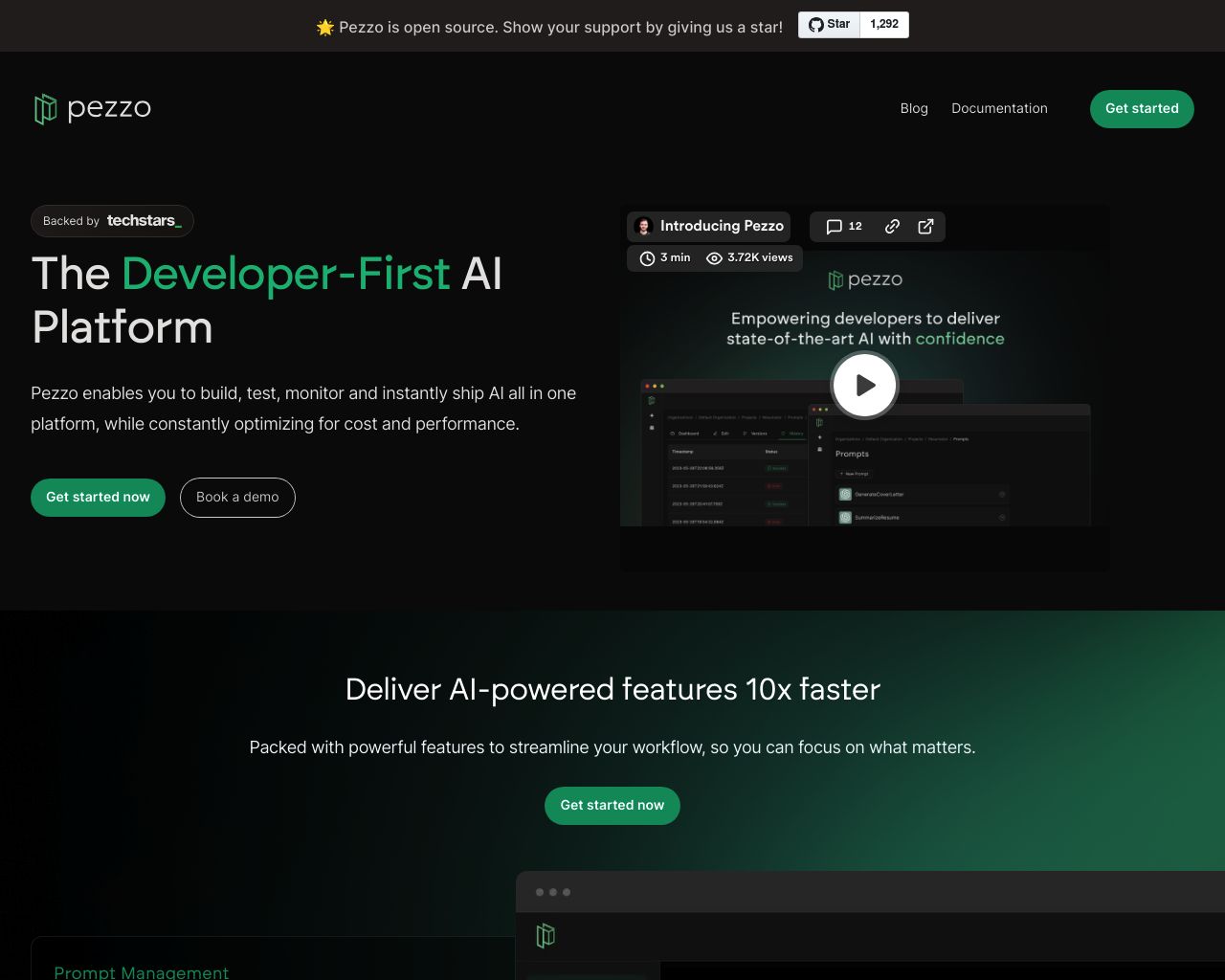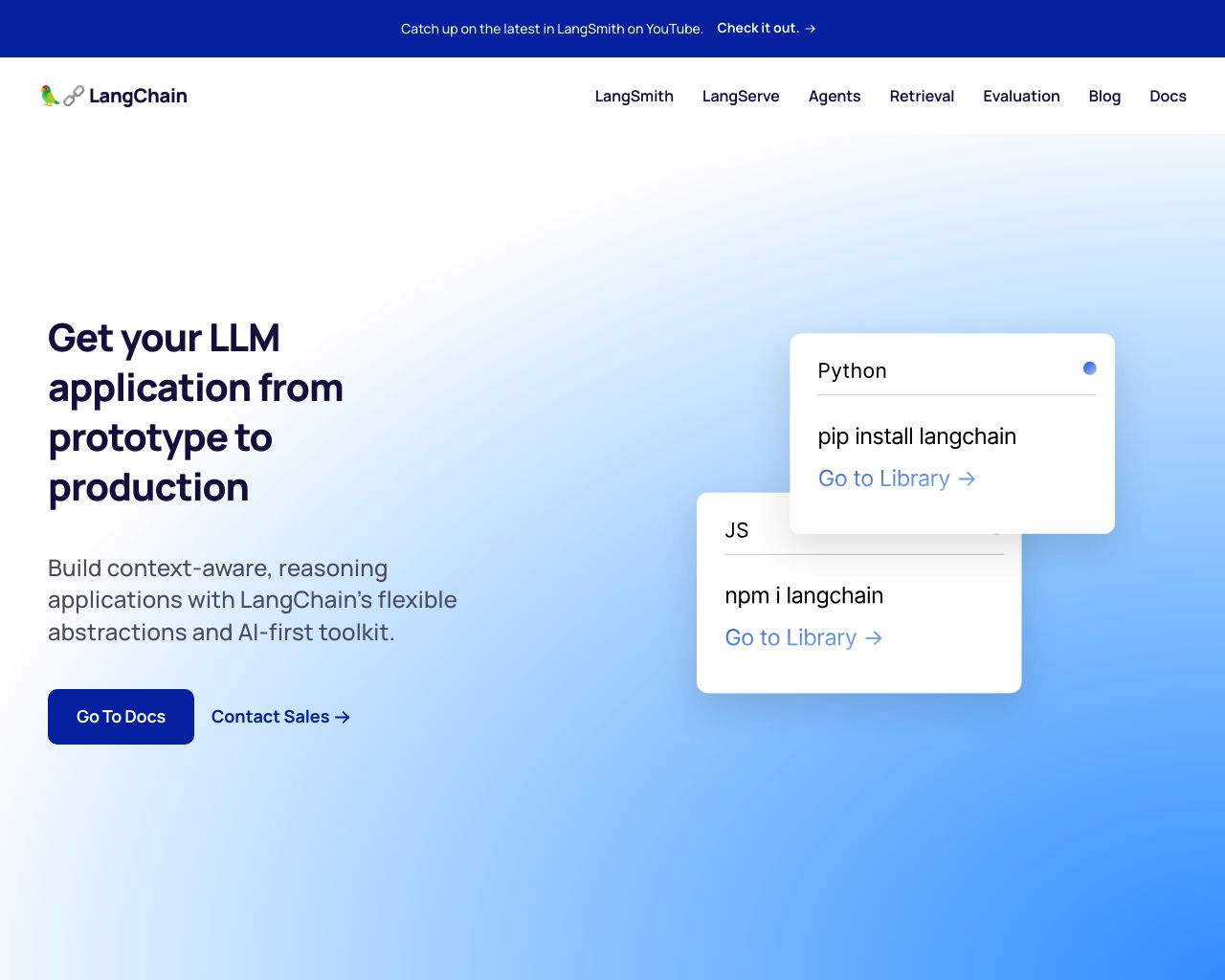AI development platforms Pezzo and LangChain offer powerful tools for harnessing large language models, but each comes with distinct strengths and limitations. This comparison delves into their core features, development approaches, and overall utility for AI enthusiasts and professionals. We examine how Pezzo streamlines prompt management and optimization, while LangChain provides a comprehensive framework for building LLM-powered applications.
By exploring their capabilities in areas like visual building tools, autonomous agents, and security measures, we uncover the gaps that may impact their suitability for different use cases. Whether you’re a seasoned developer or an AI novice, this analysis equips you with the insights needed to choose the right platform for your AI development needs.
Pezzo Overview
Pezzo revolutionizes AI development by offering an open-source toolkit that streamlines prompt design, management, and collaboration. Founded in 2023, this San Francisco-based company empowers developers to harness AI’s full potential with enhanced productivity and visibility.
The platform excels in prompt and version management, allowing developers to handle AI prompts efficiently. This feature significantly accelerates the delivery of AI solutions, crucial for teams juggling multiple prompts and versions. Pezzo’s A/B testing, targeting, and experimentation tools boost conversion rates by optimizing AI model performance.
Pezzo revolutionizes AI development by offering an open-source toolkit that streamlines prompt design, management, and collaboration.

Pezzo shines in cost optimization, potentially cutting AI operational expenses by up to 50%. The platform integrates real-time trading and charts, enhancing AI development with deeper insights. Comprehensive troubleshooting features, including execution history and time-travel debugging, enable confident AI model deployment.
Pezzo shines in cost optimization, potentially cutting AI operational expenses by up to 50%.
Transparency sets Pezzo apart. Its detailed observability into AI operations slashes debugging time and helps teams pinpoint issues precisely. This level of insight proves invaluable for efficient operations and effective problem-solving. While Pezzo offers powerful tools for AI development, it lacks some features found in more comprehensive platforms. It doesn’t provide a visual builder or no-code editor, requiring users to have coding knowledge. Additionally, Pezzo doesn’t offer specific AI agent management or autonomous agent capabilities, which may limit its applicability for certain use cases.
LangChain Overview
LangChain empowers developers to build sophisticated applications powered by large language models (LLMs). This open-source framework simplifies the creation, deployment, and management of LLM-driven solutions across various domains.
At its core, LangChain provides a set of modular components and tools that streamline the development process. These include LangGraph for building stateful agents, LangSmith for monitoring and optimizing performance, and LangServe for deploying LangChain applications as production-ready APIs.
LangChain empowers developers to build sophisticated applications powered by large language models (LLMs). This open-source framework simplifies the creation, deployment, and management of LLM-driven solutions…

LangChain excels in providing developers with flexibility and control. Its modular architecture allows for easy customization and integration with third-party services. The framework supports a wide range of LLM-related tasks, from simple text generation to complex reasoning chains and retrieval-augmented generation (RAG).
One of LangChain’s standout features is the LangChain Expression Language (LCEL). This declarative approach to chaining components offers benefits like streaming support, optimized parallel execution, and seamless tracing with LangSmith. This enables developers to build robust and efficient LLM applications with less complexity.
LangChain’s standout features is the LangChain Expression Language (LCEL). This declarative approach … offers benefits like streaming support, optimized parallel execution, and seamless tracing with LangSmith.
While LangChain offers powerful capabilities, it requires a certain level of technical expertise to leverage effectively. The framework caters primarily to developers and data scientists familiar with Python and LLM concepts. This learning curve may present a challenge for non-technical users or those new to AI development.
Feature Comparison
Pezzo and LangChain offer distinct approaches to AI development, with notable gaps in their feature sets. Pezzo focuses on streamlining prompt management and optimization, while LangChain provides a more comprehensive framework for building LLM-powered applications.
In core components, Pezzo lacks visual building tools and no-code options, requiring users to have coding knowledge. LangChain, conversely, offers more flexibility with its modular architecture and LangChain Expression Language (LCEL), though it also demands technical expertise. Neither platform provides robust autonomous agent capabilities or multi-agent collaboration features out of the box, limiting their ability to create complex, self-directed AI systems.
Security features reveal another significant gap. Pezzo’s documentation doesn’t mention specific data encryption or OAuth support, potentially raising concerns for enterprise users handling sensitive information. LangChain, while more developer-focused, also lacks explicit mentions of advanced security measures, leaving users to implement their own safeguards when deploying applications.
Feature Comparison Table
| Pezzo | LangChain | SmythOS | |
|---|---|---|---|
| CORE FEATURES | |||
| Hosted Agents (Dev, Production) | ❌ | ✅ | ✅ |
| Visual Builder | ❌ | ❌ | ✅ |
| No-Code Options | ❌ | ❌ | ✅ |
| Memory & Context | ❌ | ✅ | ✅ |
| Autonomous Agents | ❌ | ✅ | ✅ |
| Agent Work Scheduler | ✅ | ❌ | ✅ |
| SECURITY | |||
| Constrained Alignment | ❌ | ❌ | ✅ |
| IP Control | ❌ | ❌ | ✅ |
| COMPONENTS | |||
| Zapier APIs | ✅ | ❌ | ✅ |
| Data Lakes | ❌ | ❌ | ✅ |
| DEPLOYMENT OPTIONS (EMBODIMENTS) | |||
| Deploy as Webhook | ✅ | ❌ | ✅ |
| Staging Domains | ✅ | ❌ | ✅ |
| Production Domains | ✅ | ❌ | ✅ |
| Deploy as Scheduled Agent | ❌ | ❌ | ✅ |
| DATA LAKE SUPPORT | |||
| Hosted Vector Database | ❌ | ❌ | ✅ |
| Sitemap Crawler | ❌ | ❌ | ✅ |
| YouTube Transcript Crawler | ❌ | ❌ | ✅ |
| URL Crawler | ✅ | ❌ | ✅ |
| Word File Support | ✅ | ❌ | ✅ |
Best Alternative to Pezzo and LangChain
SmythOS stands out as the superior alternative to Pezzo and LangChain for agentic AI automation. Our platform offers a comprehensive solution that addresses the limitations of both competitors while providing unparalleled ease of use and versatility.
We’ve designed SmythOS with a powerful visual builder and no-code options, enabling users of all technical backgrounds to create sophisticated AI agents. Unlike Pezzo and LangChain, which require coding expertise, our drag-and-drop interface democratizes AI development, making it accessible to a broader audience.
Unlike Pezzo and LangChain, which require coding expertise, our drag-and-drop interface democratizes AI development, making it accessible to a broader audience.
Our platform excels in offering autonomous agent capabilities and multi-agent collaboration features out of the box. This allows users to create complex, self-directed AI systems that can tackle intricate tasks and workflows. Pezzo and LangChain lack these advanced functionalities, limiting their ability to handle more sophisticated AI applications.
Security is a top priority for SmythOS. We provide robust data encryption, OAuth support, and IP control features, addressing the security concerns that Pezzo and LangChain overlook. This makes our platform ideal for enterprise users handling sensitive information, ensuring peace of mind and regulatory compliance.
SmythOS sets itself apart with its unmatched flexibility in deployment options. We support various embodiments, including APIs, webhooks, site chats, scheduled agents, and GPT integrations. This versatility, combined with our scalable architecture, allows users to adapt their AI solutions to any environment or use case, far surpassing the limited deployment capabilities of Pezzo and LangChain.
Conclusion
Pezzo and LangChain offer distinct approaches to AI development, each with its own strengths and limitations. Pezzo excels in prompt management and optimization, while LangChain provides a comprehensive framework for building LLM-powered applications. However, both platforms have gaps in their feature sets, particularly in areas like autonomous agent capabilities and advanced security measures.
SmythOS emerges as the superior choice, addressing the limitations of both Pezzo and LangChain while offering a more comprehensive and user-friendly solution. Our platform’s drag-and-drop interface and no-code options make AI development accessible to a broader audience, eliminating the steep learning curve associated with competitors. SmythOS’s robust security features, including data encryption and OAuth support, provide the enterprise-grade protection that Pezzo and LangChain lack.
What truly sets SmythOS apart is its versatility and scalability. Our platform supports multi-agent collaboration, autonomous agent capabilities, and a wide range of deployment options. This flexibility allows users to create sophisticated AI systems that can adapt to various business needs and scale effortlessly. With over 300,000 integrations available, SmythOS offers unparalleled connectivity to existing tools and services, streamlining workflow integration across your organization.
Experience the future of AI development with SmythOS. Explore our diverse range of AI-powered agent templates to jumpstart your projects, or create a free account to build unlimited AI agents with no time limit. Ready to revolutionize your AI workflow? Discover how SmythOS can transform your business and unlock the full potential of AI technology today.